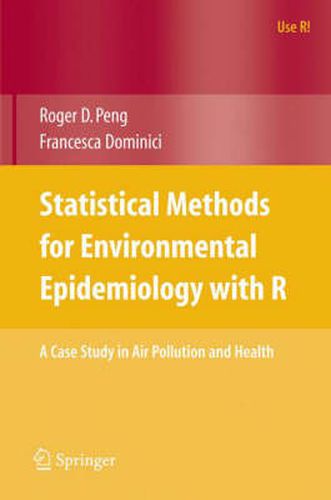Readings Newsletter
Become a Readings Member to make your shopping experience even easier.
Sign in or sign up for free!
You’re not far away from qualifying for FREE standard shipping within Australia
You’ve qualified for FREE standard shipping within Australia
The cart is loading…






This title is printed to order. This book may have been self-published. If so, we cannot guarantee the quality of the content. In the main most books will have gone through the editing process however some may not. We therefore suggest that you be aware of this before ordering this book. If in doubt check either the author or publisher’s details as we are unable to accept any returns unless they are faulty. Please contact us if you have any questions.
As an area of statistical application, environmental epidemiology and more speci cally, the estimation of health risk associated with the exposure to - vironmental agents, has led to the development of several statistical methods and software that can then be applied to other scienti c areas. The stat- tical analyses aimed at addressing questions in environmental epidemiology have the following characteristics. Often the signal-to-noise ratio in the data is low and the targets of inference are inherently small risks. These constraints typically lead to the development and use of more sophisticated (and pot- tially less transparent) statistical models and the integration of large hi- dimensional databases. New technologies and the widespread availability of powerful computing are also adding to the complexities of scienti c inves- gation by allowing researchers to t large numbers of models and search over many sets of variables. As the number of variables measured increases, so do the degrees of freedom for in uencing the association between a risk factor and an outcome of interest. We have written this book, in part, to describe our experiences developing and applying statistical methods for the estimation for air pollution health e ects. Our experience has convinced us that the application of modern s- tistical methodology in a reproducible manner can bring to bear subst- tial bene ts to policy-makers and scientists in this area. We believe that the methods described in this book are applicable to other areas of environmental epidemiology, particularly those areas involving spatial{temporal exposures.
$9.00 standard shipping within Australia
FREE standard shipping within Australia for orders over $100.00
Express & International shipping calculated at checkout
This title is printed to order. This book may have been self-published. If so, we cannot guarantee the quality of the content. In the main most books will have gone through the editing process however some may not. We therefore suggest that you be aware of this before ordering this book. If in doubt check either the author or publisher’s details as we are unable to accept any returns unless they are faulty. Please contact us if you have any questions.
As an area of statistical application, environmental epidemiology and more speci cally, the estimation of health risk associated with the exposure to - vironmental agents, has led to the development of several statistical methods and software that can then be applied to other scienti c areas. The stat- tical analyses aimed at addressing questions in environmental epidemiology have the following characteristics. Often the signal-to-noise ratio in the data is low and the targets of inference are inherently small risks. These constraints typically lead to the development and use of more sophisticated (and pot- tially less transparent) statistical models and the integration of large hi- dimensional databases. New technologies and the widespread availability of powerful computing are also adding to the complexities of scienti c inves- gation by allowing researchers to t large numbers of models and search over many sets of variables. As the number of variables measured increases, so do the degrees of freedom for in uencing the association between a risk factor and an outcome of interest. We have written this book, in part, to describe our experiences developing and applying statistical methods for the estimation for air pollution health e ects. Our experience has convinced us that the application of modern s- tistical methodology in a reproducible manner can bring to bear subst- tial bene ts to policy-makers and scientists in this area. We believe that the methods described in this book are applicable to other areas of environmental epidemiology, particularly those areas involving spatial{temporal exposures.